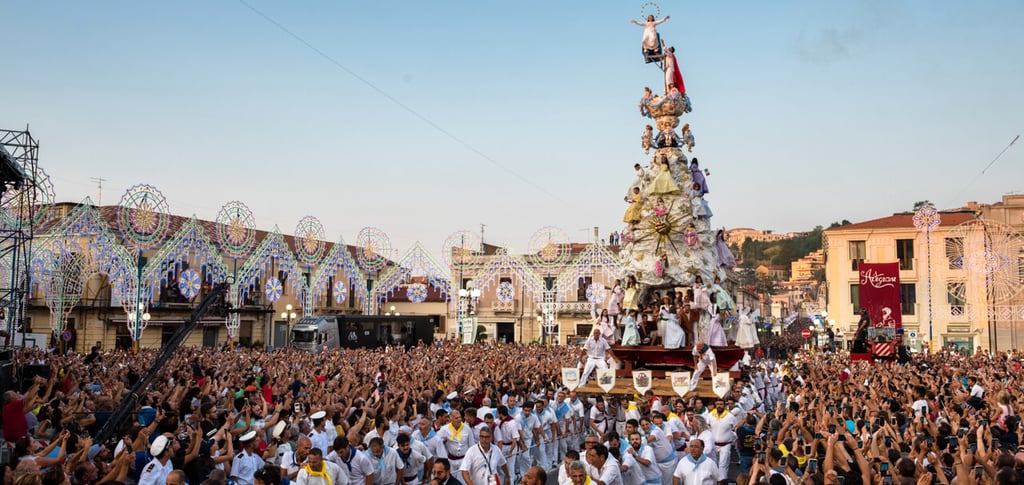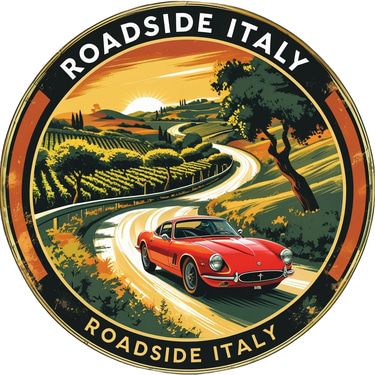Italy’s Towering Traditions: The Great Machines Carried on Human Shoulders
From glowing spires to dancing obelisks, discover the colossal festivals where faith, myth, and human strength rise high above Italy’s streets.
LOCAL STORIES&CULTURE


What do a swaying tower in Calabria, a glowing spire in Lazio, a dancing obelisk in Campania, and towering giants in Sicily have in common? They are all part of Italy’s “Grandi Macchine a Spalla” — monumental structures carried on human shoulders, each telling a story of faith, community, and spectacular ingenuity.
The Story:
Across Italy, for centuries, towns have built massive ceremonial “machines” to honour their patron saints or sacred events. These are not simple floats — they are towering constructions, some over 30 metres tall, weighing several tons, carried or “danced” through narrow streets by teams of men. In Palmi, the Varia lifts a young girl representing the Virgin high above the crowd. In Viterbo, the Macchina di Santa Rosa glows like a celestial tower in the night. In Nola, eight towering Gigli sway and spin to the rhythm of brass bands. In Messina, the Giganti — colossal statues of a legendary king and queen — stride through the city. Each event is rooted in centuries-old devotion, blending religious symbolism with local legend and pageantry.
Cultural Significance:
The Great Machines are living expressions of a shared Italian value: that faith is a collective effort, built — quite literally — on the shoulders of the community. They are moments when entire towns stop daily life to work, sweat, and celebrate together. Recognised by UNESCO as intangible cultural heritage, these festivals preserve traditional craftsmanship, music, and choreography, while keeping alive stories that might otherwise fade into history.
Traces Today:
The Macchina di Santa Rosa still lights up Viterbo every September 3rd, its design evolving with each generation. The Varia di Palmi moves only every few years, making its appearance all the more anticipated. Nola’s Festa dei Gigli fills the streets with music and dance every June, while the Giganti di Messina return each August, embodying the city’s legendary founders. Museums in each city — like Palmi’s Museo della Varia e dei Giganti — safeguard the memories, photographs, and artefacts, ensuring the machines’ stories live on between festivals.
Conclusion:
Italy’s Great Machines are more than festivals — they are towering symbols of identity, artistry, and endurance. To see one is to witness the meeting point of myth, religion, and human strength. To follow them all is to trace a living thread that binds different regions into one shared heritage, carried high for the world to see.
